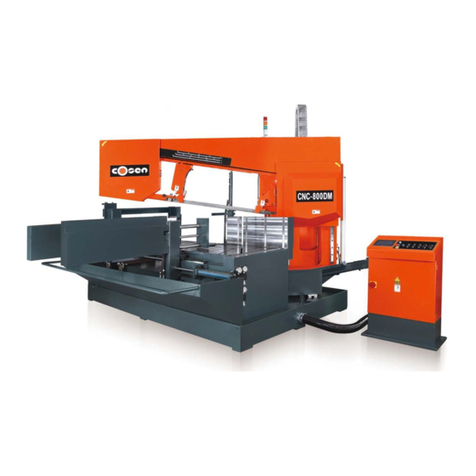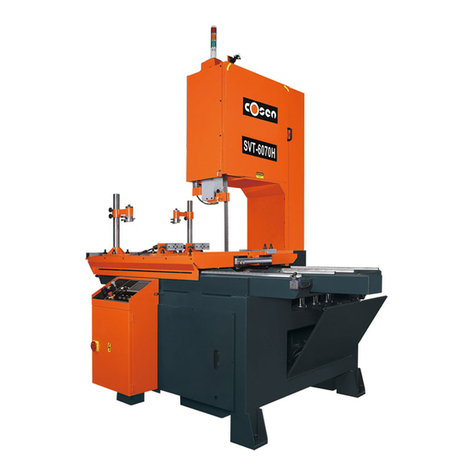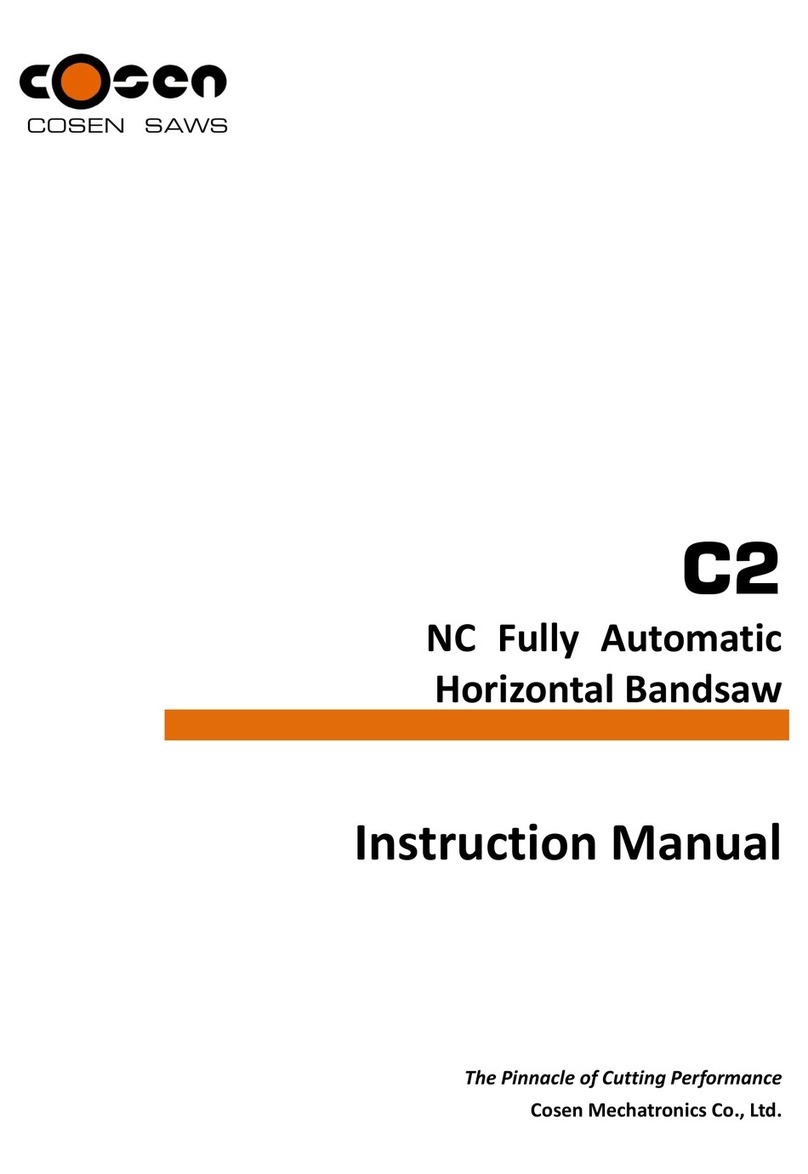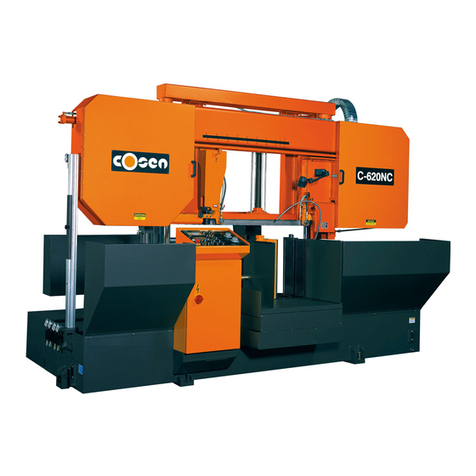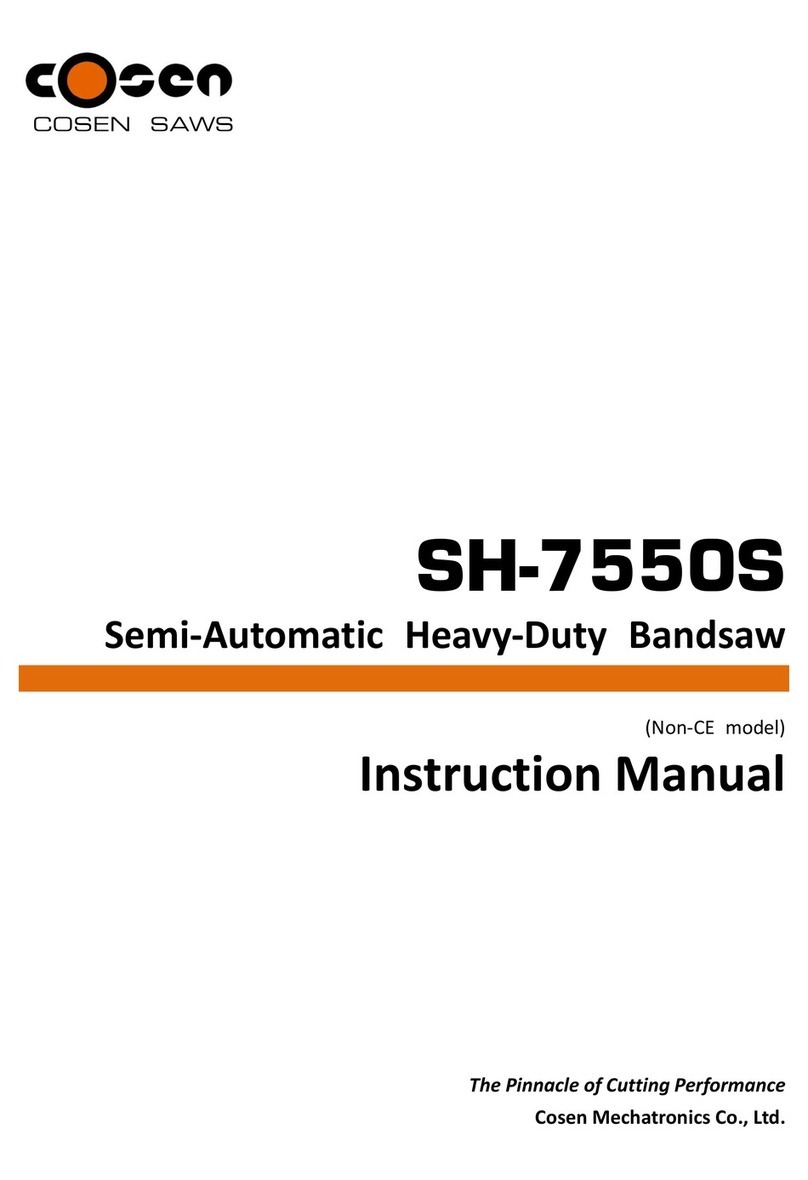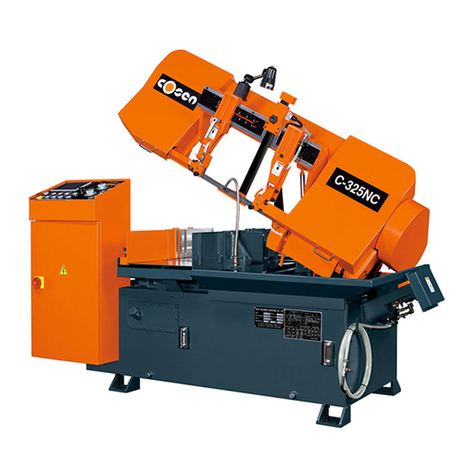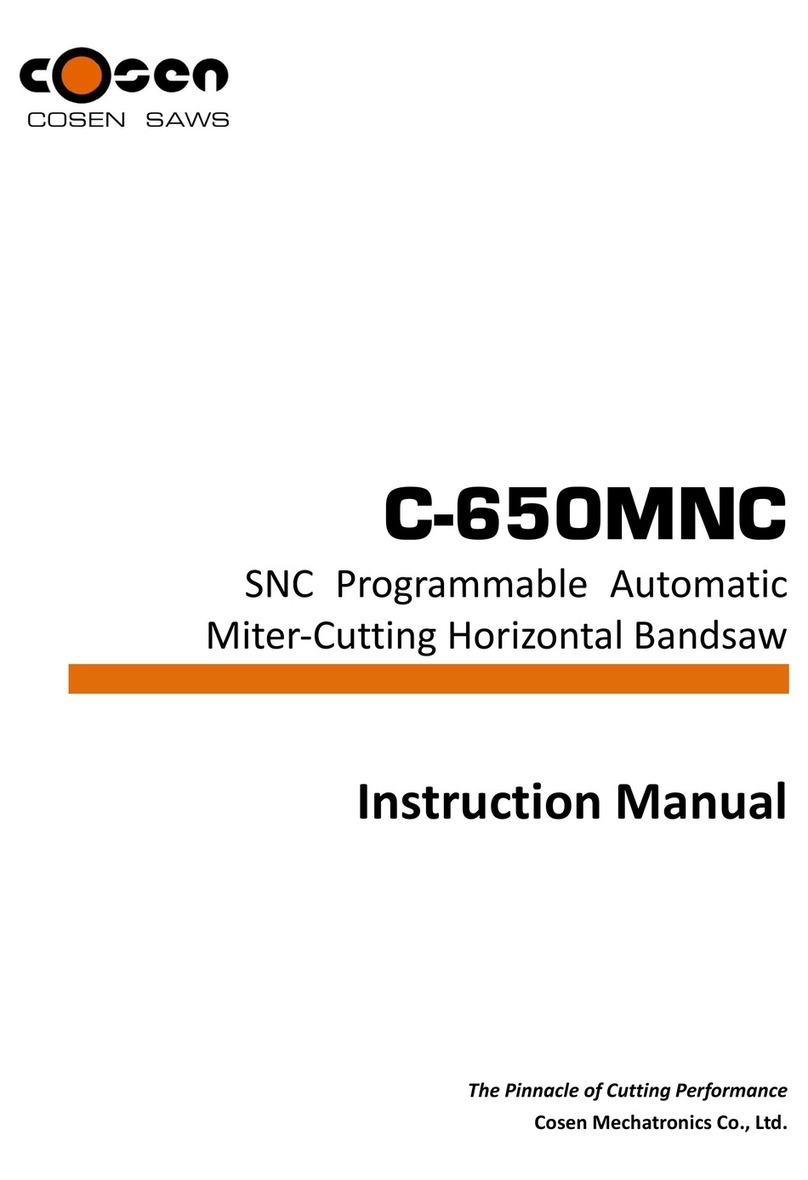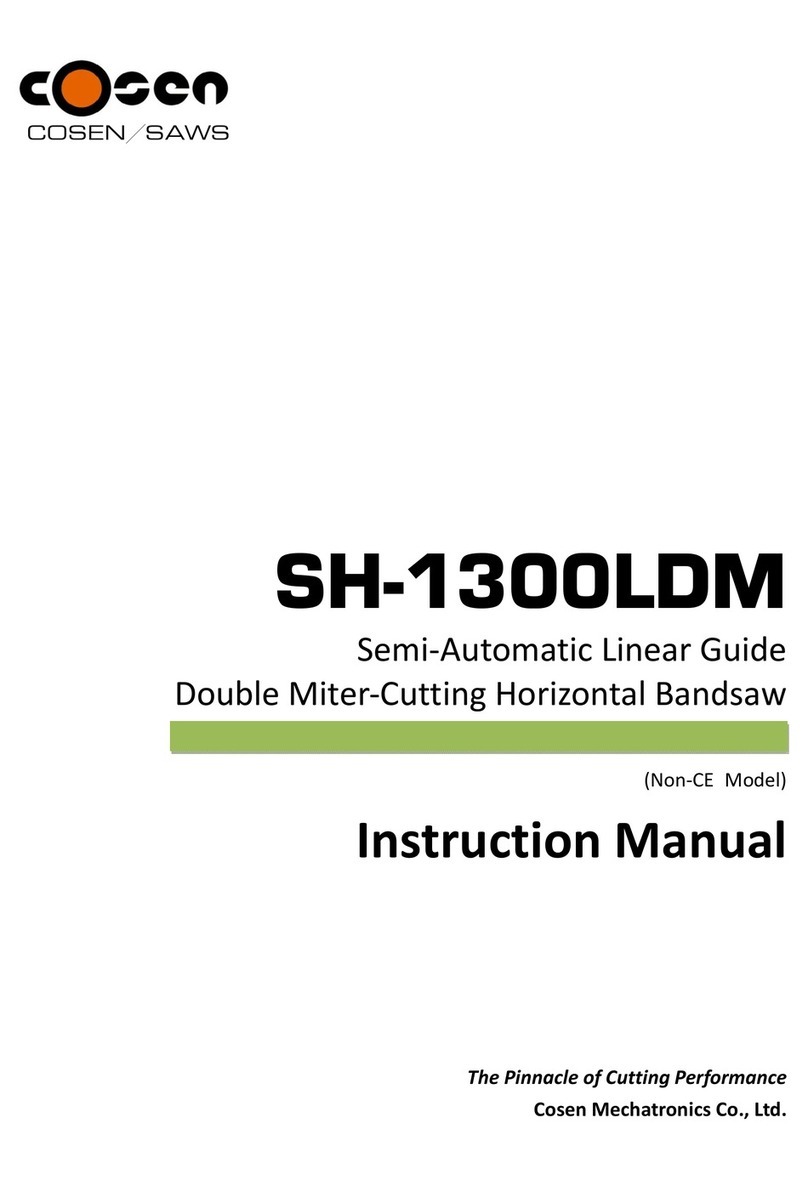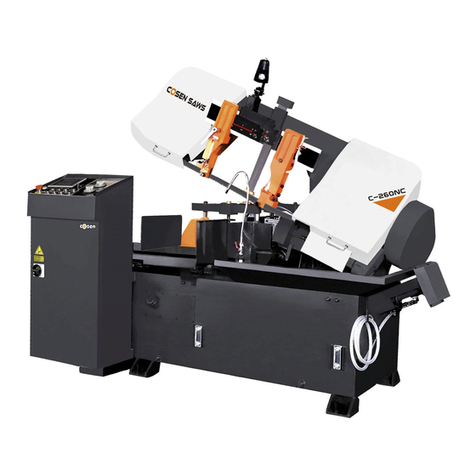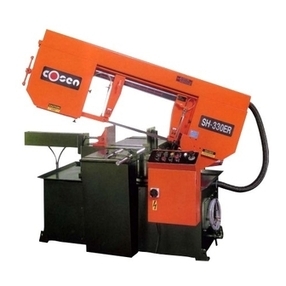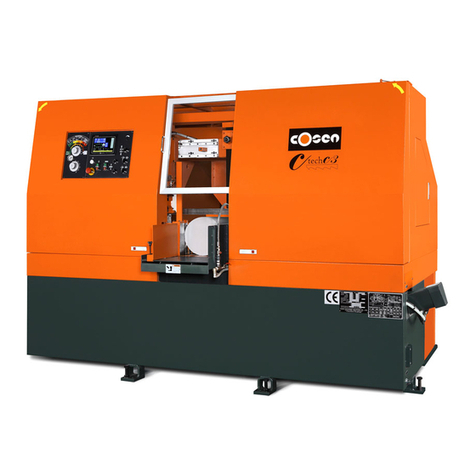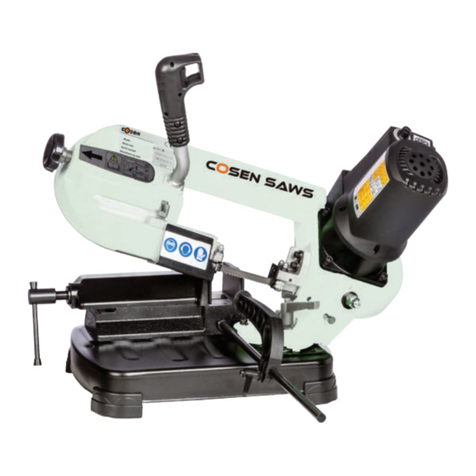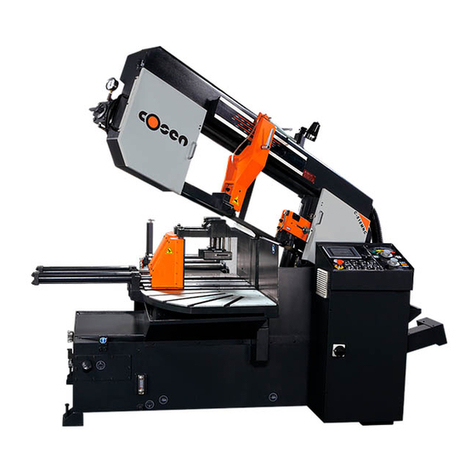
ii
Control Buttons ……………………………………………………………………………………….……..
Blade Descend Pressure & Speed ………..…………………………………………………….……
HMI Touch Screen & Functions …………………………………………………………….…………
HMI Error Codes ………………………..……………………………………………………….………….
Standard Accessories ………….………………………..……………………………………………….……………
Optional Accessories …….…….………………………..…………………………………………….………………
Unrolling & Installing the Blade …………………………………………………………………….…………….
Adjusting Wire Brush ………..……………………………………………………………………….……………….
Placing Workpiece onto Workbed ………………………..……..………..…………………………………….
Positioning Workpiece for Cutting ………..………..………………………………….……………………….
Adjusting Saw Arm……………………………………………………………………………………………………….
Adjusting Coolant Flow ………..………..…………………………………………………………………..……….
Adjusting Blade Speed ………..………..…………………………………………………………………………….
Breaking-In the Blade ………..………..…………………………………………………………………..………….
Test -Running the Machine ....………..……………………………………………..…………………………….
Cutting Operation ………..………..……………………………………………..…………………………………….
Starting an Automatic Cutting………………………………………………………………………………………
Using Top Clamp for Bundle Cutting……………………………………………………………………………..
Terminating a Cutting Operation ………..………..…………………………………….……………………….
Section 5 –Electrical System
Electrical Circuit Diagrams ……….…………………..……………………………………………………………..
Section 6 –Hydraulic System
Hydraulic Diagrams ……….…………………..………………………………………………………………………..
Section 7 –Bandsaw Cutting: A Practical Guide
Introduction ……………………….……..…………………..…………………………………………………………..
Saw Blade Selection ………………….….………………..…………………………………………………………..
VISE LOADING …………….…………………..………………………………………….………………………………
BladeBreak -In …………………………………………………………………………………….……………………..
Section 8 –Maintenance & Service
Introduction ……………………….…….……….…………..…………………………………………………………..
Basic Maintenance …..……………….…………………..…………………………………………….……………..
Maintenance Schedule …..………….…………………..…………………………………………………………..
Before Beginning a Day’s Work ….……………………………………………………………………
After Ending a Day’s Work …………..………………………………………….………………………
Every 2 weeks ……………………………………………………………………….……………………….
First 600hrs for new machine,then every 1200h………………..………………………….

